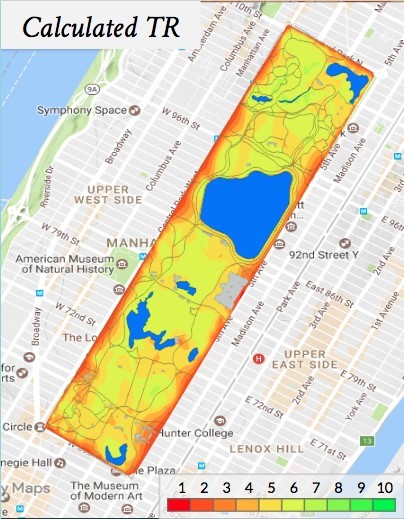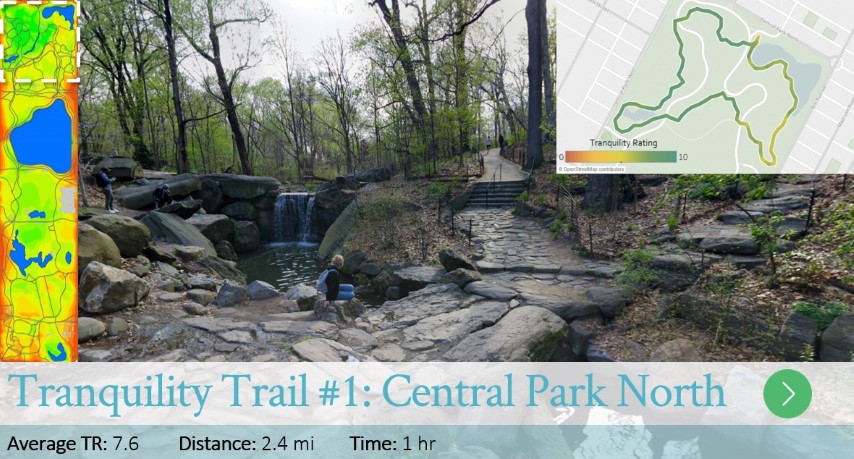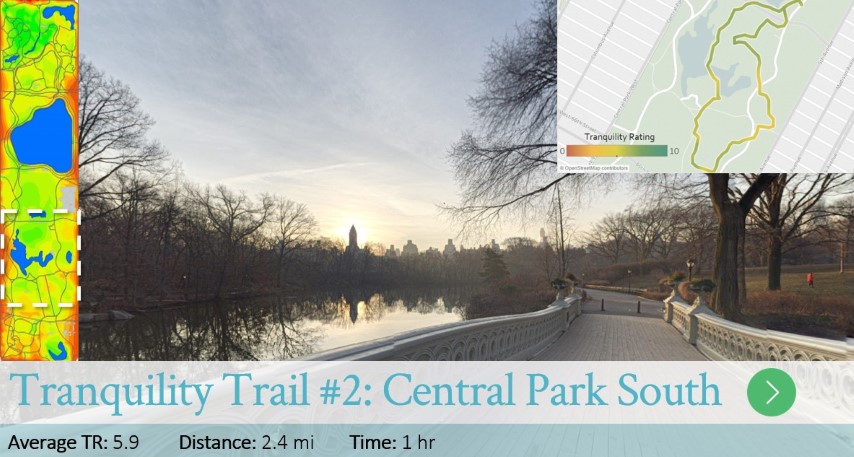Mapping Tranquility within Central Park, New York City
In urban areas it is important to provide citizens with green spaces to relax and unwind to enhance psychological and physical well-being. These areas can be considered restorative settings, giving relief from overload and stress, and cities must do more to provide and protect these areas. The EU requires all authorities to protect quiet areas in cities; they recognize that access to quiet areas have clear health and economic benefits. In New York the NYC Plaza Program aims to ensure that all New Yorkers live within a 10-minute walk of quality open space.
In order to help identify appropriate spaces for citizens to unwind, early research considering the concept of tranquility has yielded the Tranquility Rating Prediction Tool (TRAPT). TRAPT assesses the overall noise level together with visual features in the space and has been used in the development of tranquility trails in the UK. These are walking routes that allow space for citizens to reflect and recover while receiving the benefits of healthy exercise.
For this study, researchers at the University of Hartford, Connecticut, applied the concept of a tranquility rating to develop a map of tranquility within Central Park in New York City. A team of 14 participants walked predefined paths throughout Central Park and monitored noise levels simultaneously within their location as they walked through the park. Participants also took photographs at regular intervals. All data sets were time stamped and geo-localized, and together they were used to develop a map of tranquility in Central Park (figure 1).

Figure 1. A tranquility map of Central Park
This tranquility map was then further analyzed to select the most tranquil areas within the park. From this, two separate tranquility trails (north and south) were created. A summary of each trail is shown in figures 2 and 3. The north path winds through the North Woods of Central Park, taking walkers away from the city, up the Great Hill for some skyline views, then along the peaceful loch and into the conservatory garden before finally meandering the edge of the Harlem Meer. The south trail starts and ends at the Metropolitan Museum of Art; this trail will take one through the Ramble, along the Lake, and close enough to the Mall to people watch, but it is removed enough to preserve the tranquility.

Figure 2. Tranquility trail 1

Figure 3. Tranquility trail 2
Overall, if we can predict or measure the tranquility of spaces, especially in urban environments, it will be easier to identify or create more tranquil spaces, providing even more areas where individuals can escape from the stresses of modern-day life.
Editor’s Note
This is a summary of the work presented in King, Caltagirone, Steers, and Slaboch. 2018. “Mapping Tranquility—A Case Study of the Central Park Soundscape, New York City.” Proceedings of INTER-NOISE 2018, Chicago, IL, USA.


